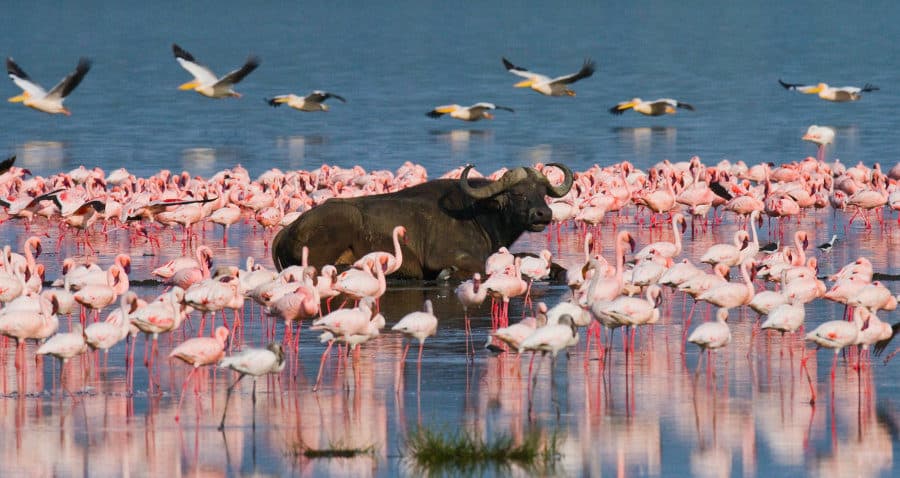The Masai Mara is one of the world’s ultimate travel destinations. An adventure here is more than just a safari. It offers unfiltered access into an untamed wildlife world.
Yet the Masai Mara can also be one of Africa’s most overrated experiences. Dozens of vehicles sometimes crowd around a single lion and the safari can feel anything but wild.
This Masai Mara safari planning guide is based on many separate visits over the last ten years. It is produced for independent travellers wanting to plan the best safari their budget can allow.
So rather than thrills and promises of watching a lioness devour a zebra carcass, read on simply for some solid and practical advice.
At Africa Freak we know that there is not a best Masai Mara safari, even if safari companies will suggest otherwise. Instead, there is the Mara safari best for you.
All the Basics
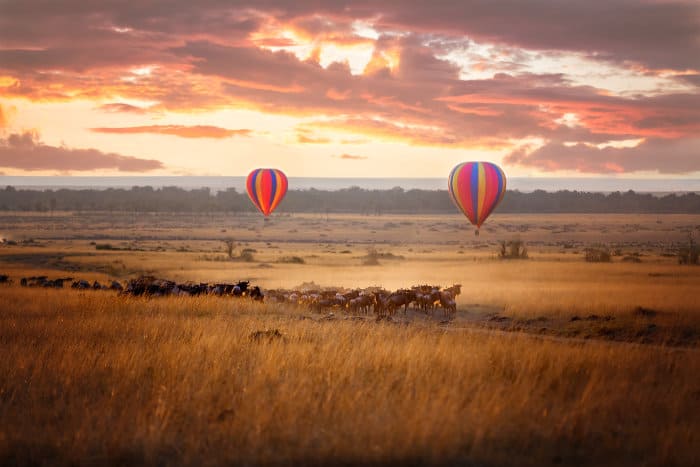
Where is the Masai Mara?
The famous Maasai Mara grasslands are located in the south of Kenya and are contiguous with Serengeti National Park in Tanzania.
The Serengeti and Masai Mara are a single ecosystem divided by an international border. Part, but not all, of this border is formed by the Mara River.
How big is the Mara?
The entire Mara-Serengeti ecosystem covers an incredible 24,000 square kilometres. The Masai Mara National Reserve is only 1,510 square kilometres. Surrounding the national reserve are roughly 5000 square kilometres of private and unfenced conservancies.
Why is this destination so famous?

You could also ask whether the Masai Mara really is one of the best safari destinations in Africa. The ecosystem has enjoyed fame through wildlife documentaries, most notably for the great wildebeest migration.
Put simply, for three months a year these grasslands are home to more wild land mammals than anywhere else in Africa. Over 2 million animals must coexist in a relatively small area. This brings wildlife drama. And that is what a safari is all about.
For the other nine months the Mara is still packed with life. There is an incredible abundance of big cats all through the year. Wildlife diversity is also remarkable. The safari really can be better than anywhere else.
However…this is the most famous destination in the whole of Africa. So it can also be very crowded with visitors and vehicles. This detracts from the experience as crowds do not help you connect with your wild side.
How long do you need for a Masai Mara safari?
There is no definitive length of time. Most safari packages include three nights in the Masai Mara. This is ample time to explore different aspects of the ecosystem and encounter most of the famous animals in their natural habitat.
Budget safaris tend to spend less time because this makes for a cheaper price. Private conservancies safaris typically involve two days in the conservancy, plus a middle day in the national reserve.
How do you get to the Masai Mara? Where can you travel to next?
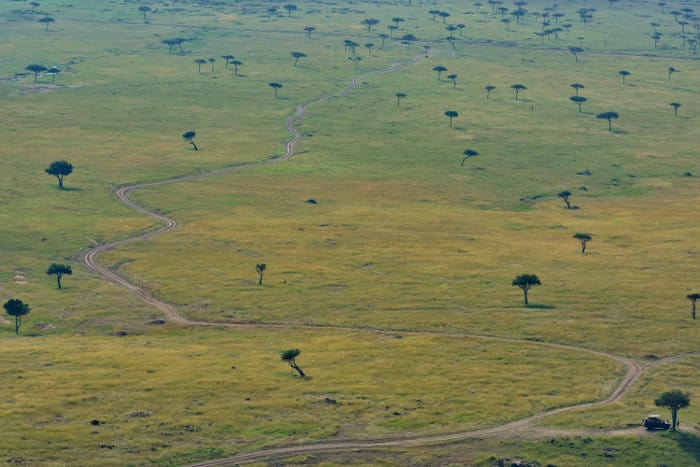
This is a really important question to consider in planning.
Nairobi to Masai Mara takes over six hours by road and it is not a particularly comfortable journey.
After the Masai Mara you have two options. Return to Nairobi by road. Or continue south to Tanzania. Both options will take another six hours.
The expensive alternative is a safari flight from Nairobi Wilson Airport to the Masai Mara. It is beautiful and efficient yet will be out of the budget for most.
Masai Mara National Reserve vs Private Mara Conservancies
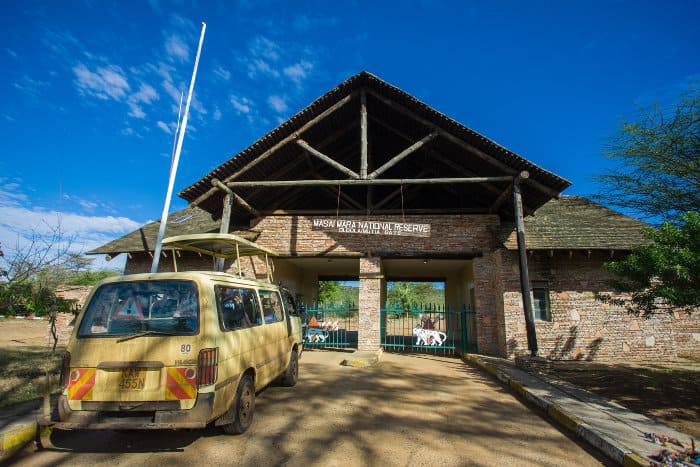
It is essential to understand the difference in experience between the Masai Mara National Reserve and the private Mara conservancies.
The National Reserve
Let’s put the size of the Masai Mara National Reserve into perspective. 1500 square kilometres equates to just 6% of the total ecosystem Serengeti-Masai Mara. Unfortunately this 6% receives more visitors than everywhere else.
290,000 people visited the Masai Mara National Reserve in 2007. Although that number has since decreased (mostly due to perceptions about safety), it is still an enormous number for just 1500 square kilometres.
Anyone can visit the national reserve, as long as they pay the daily conservation fee. This inevitably leads to crowds during peak season.
Strict rules reduce human impact on the grasslands. Off-road driving and driving at night are not allowed. Game walks and walking safaris are banned. Vehicles must stick to clearly defined routes. However, there are no rules concerning the number of vehicles at any one sighting.
You can stay at lodges and camps inside Masai Mara National Reserve. However, these tend to be expensive. For the same budget you can also stay in a private conservancy.
Budget safaris often use camps located outside the reserve. These are much cheaper and there is still a semi-wilderness feel.
The Private Conservancies

Private conservancies surround the national reserve. There are no fences and wildlife moves freely between the national reserve and all the conservancies. There are no clear borders on the grass, only on paper.
Access to each private conservancy is restricted to guests staying at a camp or lodge in that conservancy. Visitor numbers are carefully restricted so the safari is more exclusive.
Less people means less human impact. Game drives are allowed to go off trail as the land can recover. As the conservancies are governed privately they also permit nighttime drives and walking safaris.
As these plains are quieter they have started providing refuge for secretive animals. For example, Mara Naboisho has proved to be a popular place for cheetahs and leopards to raise their cubs, away from the noise of the national reserve.
In short, the Masai Mara conservancies provide a safari away from crowds. You can explore further and get closer to the animals. Yet, this exclusivity comes with a hefty price tag. A safari in a private conservancy will be at least triple the price of the national reserve.
Mara North is the largest and oldest of the conservancies. Mara Naboisho and Olare Orok also share boundaries with the national reserve.
Then there are four conservancies that are further away. These are operated by Masai landowners and good examples of community-led conservation.
Lemek and Ol Kinyei are well established. Ol Chorro and Enonkishu have only recently been gazetted and it may take some time before they attract large animal populations.
The Great Wildebeest Migration in the Masai Mara

The great wildebeest migration marauds into the Masai Mara every June. Wildebeest herds make their famous Mara River crossing, before grazing in the Masai Mara for around three months.
This article provides a detailed guide to the great wildebeest migration. The following is a summary as it relates to the safari experience in the Masai Mara.
June and July brings the river crossing. This is the single most famous wildlife sight anywhere in Africa. As such, the grasslands are overly crowded with vehicles and visitors.
While one photo may show wildebeest crossing the river, thousands of photos can show more than 50 vehicles waiting fruitlessly for the wildebeest to actually cross.
From July to September there are more wild mammals in the Masai Mara than anywhere else. All those wildebeest and zebra bring incredible drama. This is naturally the busiest time of year.
Only wildebeest and zebra actually migrate. Some spotted hyenas follow them, as do vulture flocks. However, other predators do not have the stamina to follow the wildebeest. Instead, they must protect their home range.
In summary, there is the same incredible number of big cats in the Masai Mara all year around. Predator encounters can be better outside the migration, because the battle for food leads to intense and dramatic scenes.
When to Visit the Masai Mara – Where to Go Dependent on the Month

You can visit the Masai Mara during any month and have an incredible experience. The most important consideration is where to go dependent on the month.
January to March
These months are warm, before the rains. The grass is low, making it easy to spot big cats and lesser known animals.
January to March provide premium dry season game viewing. However, most visitors to East Africa choose the Serengeti during these months. That is because it is wildebeest calving season in the southeastern plains, far away from the Mara.
These months are a great time to visit anywhere in the Masai Mara, both the national reserve and conservancies. It is before the rains and there are not many other vehicles.
April and May
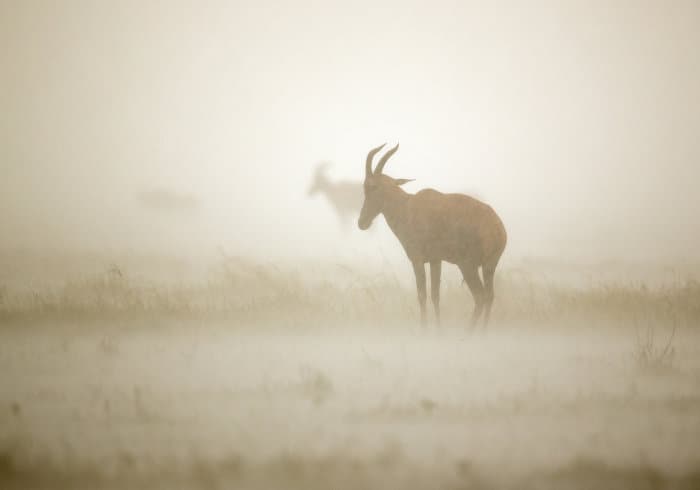
These are the long rainy months and the grasslands can turn to mud baths. It is off season in the Masai Mara and elsewhere in Kenya.
These months are not ideal for a safari. Many lodges and camps close, particularly those in private conservancies. However, most lodges in and around the national reserve stay open.
If you seek adventure then the Masai Mara in April and May will connect you to your wild side.
Choose the national reserve during these months. The trails are wider and can better survive flooding. It will be very quiet with hardly any other vehicles.
June to August
As the great wildebeest migration charges into the Masai Mara so do the crowds.
Not only is this the most famous time to come see wildebeest, it coincides with the most agreeable weather, and holiday season in Europe.
During these months you should go on safari in one of the private conservancies. This is the only way to escape the crowds and enjoy a wild experience.
Forget about the Mara River crossing. Often it takes three to five days for the wildebeest to gather before they actually cross. Many vehicles crowd at the river. It is like an Instagram photo shoot, when you could be exploring the wild wonder elsewhere.
September and October
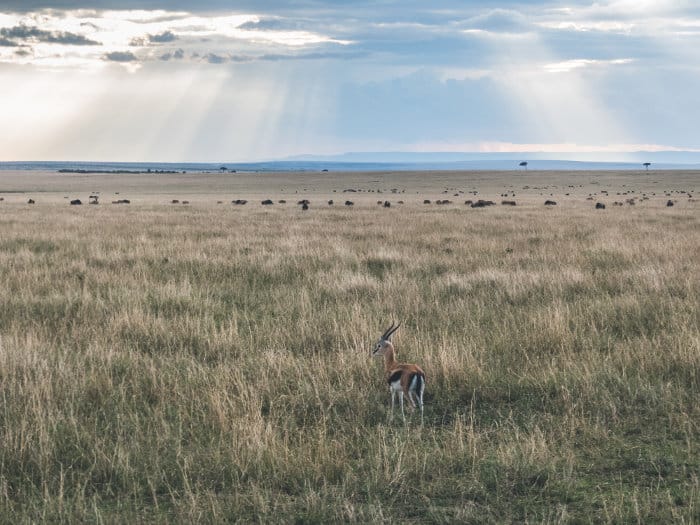
Wildebeest still carpet the Mara plains during these months. The herds have mostly moved northwards into the private conservancies.
Grass has shrivelled by now and the game viewing is superb. Like January to March these months can offer a choice between both the conservancies and national reserve.
November and December
These months are a less intense version of April and May. There will be rain but not many visitors.
Those that do visit will find a great value safari in the national reserve.
Continue the Safari Planning

This Kenya safari guide covers all the country’s key destinations and how to build them into an itinerary.
Also read the Tanzania safari guide to understand how the two countries can be combined.
There isn’t much more information we can give you. Just remember that there are different safari experiences in the Masai Mara and plan accordingly.



